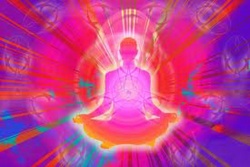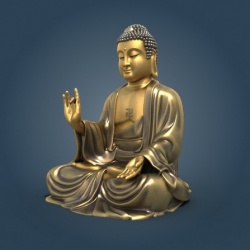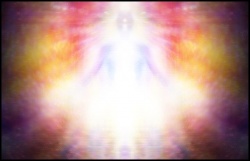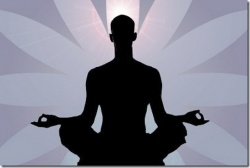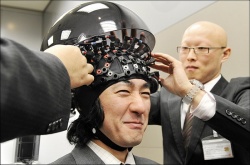Buddhist and Scientific Views of Mind: Therapeutic Implications and Suggestions for Future Directions
We are often exposed to the idea of an “eastern” view and a “western” view of the mind, as if the continental divides of the Pacific Ocean separated Asia and Europe in some fundamental intellectual sense.
Increasingly this is not the case. There are certainly vast differences in traditional presentations of a characteristic eastern tradition such as Buddhism and a western institution like cognitive science.
Each has its own methodology and doctrines as well as therapeutic and social strengths and weakness. However, while they may sometimes seem mutually incompatible, there are ancient and modern dialogues which point to a third perspective which transcends the dichotomy.
As psychologists and clinicians, this shift in perspective asks us to reevaluate our position in relationship to our conceptions of the world, giving up limited, broken understanding and brining human experience back into our personal practice and institutions.
Cognitive science is by no means a uniform discipline.
It includes many different fields, such as neuroscience, psychology and artificial intelligence.
Though views on the mind are always shifting in today’s dialogue the one we tend to see in popular media is something close to the hypothesis that the mind “is” brain activity, also known as “identity theory”)1).
This view holds that mind, experience, or consciousness, is identical to the action of neural networks.
For example, the well-known consciousness researcher Antonio Damasio bases his theory of the origin of consciousness on the brains ability to self-model bodily states)2).
In these kinds of views, it is biological processes—the interaction of material/physical parts—that create the phenomenon of mind or consciousness.
Research conducted on this basis most commonly utilizes only third person techniques like anatomical measures such as EEG, fMRI and PET scans, and behavioral measures such as brain lesion studies and solicited self-report.
In fact, apart from such pioneering scientists like U.C.L.A.’s Dan Seigel, cognitive science has not even bothered to define the first-person experience of the mind, let alone study it. )3)
This overall stance is consistent with the general methodological trend of scientific inquiry.
As Dr. Alan Wallace mentions, “one of the central ideas of this discipline is that of a disengaged observer, capable of objectifying the surrounding world…in order to pursue research in an unbiased and rational manner.”)4)
In pursuing this aim, a researcher must necessarily presuppose that “outside the mind is an objective world…”)5).
In other words, such a stance is placed in a dualistic worldview where what we can study are only the objects which are separate, independent and measureable apart from our observation.
At best, this leaves the mind outside the realm of scientific inquiry, since the only things that can be studied are those things that appear apart from it.
At worst, the mind isn’t even considered existent, such as in the proposals of several eliminativist theorists like Daniel Dennet )6).
Hence, the brain is the primary focus of scientific cognitive research and theory since it is available and acceptable to the primary methodology of this view.
This approach has been extremely successful but it also has flaws. Through hundreds of years of experimentation we’ve discovered anatomical keys to certain experiences. Anesthetic, surgical interventions and psycho-pharmaceuticals have arisen as a result of taking such a view seriously.
We have come a long way in treating disorders which have a large bio-structural component such as substance addiction and we’ve identified important genetic and environmental factors in the pathogenesis of mental disease.
There is no doubt that many people have benefited from these advances. However, this views general devaluation of subjective states has a social cost.
For example, John Pickering mentions that “in trying to emulate the natural sciences too slavishly, psychology has impoverished both its theories and methods.
The mechanistic world view implicit in cognitive science excludes experience, since machines patently have no interiority”. This, he says, has resulted in what he calls the “coarsening and commodification of the human condition”)7).
In the extreme, this situation results in the cold, sterile psychiatrist who checks boxes on a clipboard while prescribing medication to the patient who takes no responsibility for their own behavior.
Though certainly a caricature, such a flavor can be found in public health institutions all across the world. An over emphasis on physical intervention can leave relationships and volition out of the therapeutic picture.
Fortunately, many psychiatrists and psychologists understand this problem and go to great lengths to cultivate therapeutic rapport and personal responsibility.
Buddhism is also a varied and divergent discipline, but in general it takes a different approach altogether in studying the mind.
The overall theme of Buddhism seeks to study the mind itself, leaving structural physical elements such as the brain mostly out of its picture.
Buddhist’s like Geshe Tashi Tsering consider this an “inner science”)8). In the traditional view, the mind is likened to a current which flows inside of a physical structure like the body, but it is different from the body itself.
Lati Rinpoche comments that the “…meat of the brain…is not an illuminating element.”)9)
This illuminating, knowing element of the mind is a non-physical continuum which, in Buddhist theory, continues beyond the death of the body, albeit in a much subtler form. This “substrate” form is a “…luminous, clear consciousness that is the foundation for the emergence of all appearances…“ )10).
To this “inner science” “…the method of mindfulness is fundamental.
Mindfulness means that the mind is present in embodied everyday experience; mindfulness techniques are designed to lead the mind back from its theories and preoccupations, back from the abstract attitude, to the situation of one’s experience itself.”)11)
This method has generally precluded the possibility of deep investigation into the structure and functions of outer phenomenon because it focuses on the experience of the investigators themselves.
While some Buddhist thinkers have gone so far as to theorize that consciousness is the fundamental foundation of all reality )12), in general Buddhism doesn’t argue that the brain, and hence the physical world, has no part in conscious experience.
Wallace comments on this by saying that “mental and physical phenomena do obviously influence each other, but there is no physical mechanism by which this happens.”)13).
His Holiness the 14th Dalai Lama comments that one of the reasons for Buddhism’s focus on the subjective aspect of mind is that the “…main concern is change…” Buddhists “are not concerned in how change takes place, but how to change.
That is their business” )14).
While certainly this view has been fruitful in the soteriological aims of the tradition, it has limitations as a comprehensive mental health system.
As we already mentioned, the structural functions of biology have been much less important to Buddhists than understanding how to use mental engagement for experiential transformation.
Hence, over its 2500 year history, Buddhism has developed a wealth of first-person methods that give it an enormous authority in the creation of mental well-being.
However, the extreme focus on interventions at the level of volition, attention and conceptuality may be inadequate as an initial intervention for biologically mediated conditions.
For example, relying solely on impulse control is somewhat useless for advanced drug dependence and even advanced mental training may do little for the epileptic.
Additionally, extreme cases of “idealist” views of mind created reality or karmic determinism can create real ethical and social problems.
The implication of such extremism is that people facing medical issues, abuse, discrimination or inequality somehow earned—and therefore deserve—their results through their past and present actions.
The sexism of Buddhist patriarchy or the implicit acceptance of the cast systems of the Indian subcontinent may be considered as two examples of this trend.
If we compare these two traditions as we’ve explored them, they can seem incompatible.
Scientists at their most extreme are suggesting that the mind is a mere “epiphenomenon” )15) and that the only reality is the activity of physical systems, while Buddhists at their most extreme are suggesting that only consciousness itself underlies all reality, making matter the illusion.
While the majority of practitioners of both traditions do not fall into such extremes, the methodological allegiance of each side produces a friction that is bound to bring out this issue. Doctrinal incompatibilities which follow, such as reincarnation or emergence, will always be a sticking point.
However, this friction is essentially related to an issue that philosophers all over the world have pondered over for millennia. Anyone can see that the experienced world appears to be both subjective (as in thoughts and emotions) and objective (as in bodies and stars).
The natural question is: which one of them is ontologically primary? In other words, either mind or matter has to come first; a cause must follow its effect. In cognitive science this has taken the form of Chalmers’ “hard problem” of explaining how consciousness arises from the brain. )16).
Buddhism has also taken up the argument in its attempts to explain Buddha’s teachings on “anata” or not-self. Over the millennia they’ve tried to explain the underlying relationship between the shifting conventions of human endeavor and the stability of the world as it appears.)17)
Few have been able to reconcile the issue, eventually taking one of the stances we’ve examined above.
Though in practice most people are able to draw from both sides without issue, it is clear that when we rely too heavily on either it can create clinical limitations as well as social and ethical issues.
However, some have claimed to “solve” this dualistic problem in a very interesting way. This “third” approach to the mind vs. matter issue does not precipitate the intractable “hard problem”.
In Buddhism this was proposed by the ancient Madhyamaka tradition and in recent times by the “enactive” approach of some cognitive neuroscientists.
The “middle way” teaching of the Madhyamaka developed as a way to relinquish dogmatic views.
The Indian Buddhist thinkers saw that if we try to say that something is “really” real, completely independent and from another phenomenon we’d get into a problem explaining how things changed.
This applied to common sense items like seeds turning into sprouts )18), and would also apply to our more complex phenomenon such as brain activity changing into mind.
However, they were equally aware that if we took the position that an appearing phenomenon wasn’t real, then we’d be denying the common sense appearance of experience.
Instead of being caught in an intractable dichotomy, their solution was to give up on both categories leaving only an un-articulated, full interdependent experience. )19) They found that once we let go of the idea of distinct, self-existent categories there is no more tension between them.
To these Buddhist contemplatives, the only thing we lose in adopting this attitude towards experience is our confusion.
Reality still appears and things still function, but we no longer feel compelled to believe in independence.
Though partially inspired by the Madhyamaka thinkers, the modern “enactive” approach of neuroscientists like Varela takes just such a position on their scientific study.
The field he began, known as “neurophenomenology” takes a strict “anti-foundationalist” stance.
As Michel Bitbol explains, this means that “there is no foundation in the objectified entities of physics; but no ultimate foundation either in the field of subjectivity…”)20).
This view is best encapsulated by Varela himself, who said: “…the organism both initiates and is shaped by the environment…we must see the organism and environment as bound together reciprocal specification and selection.”)21)
In other words, it embraces the full interdependence between beings and their environment and rejects either a “matter-first” or a “mind-first” position.
It must be stressed that both of these “middle” views requires more than mere intellectual agreement.
They require a “completely renewed and broadened sense of science” that embraces human experience.)22) In fact, one of the reasons cited that Nargarjuna, the founder of the middle way never established a view per se is that to take any view as final was a mistake )23).
To these Buddhists, experience spoke for itself. In a similar way, Varela’s neurophenomenology does not propose to “solve” the hard problem by offering a new theory of consciousness.
Rather, it offers an alternative active, embodied, and engaged stance that renders the issue impotent.
Buddhist’s have always advocated a mindful, open ended, embodied reflection as a way to engage with experience without bias, but only recently have scientists begun to do the same.
Varela cautions that without this essential practice, scientists are doomed to implicitly embrace unproductive, even nihilist, views because they will not be able to integrate their radical discoveries into their lived experience.)24)
Our example here is the idea that matter or mind doesn’t really exist because one is the primary “cause” of the other.
Rather than continue this debate, this third approach asks us to understand that correlation is a “two-way relation” and that the decision to take “one of its terms as explanans and the other as explanandum (rather than the other way round) is arbitrary” )25).
This different approach to the world becomes a lived, open ended investigation into experiential relationships, rather than extraction of abstractions from an imaginary objectivity.
This practice allows scientists and clinicians to fully embrace the best of both views we examined above.
We can utilize the important and useful technological advances brought to us by the scientific enterprise and provide treatment on that basis for those that require it. However, we can do so fully validating our own experience and that of our patients.
We can put down the “clip boards” and share human moments together inside of the “real” lived moments that we fundamentally inhabit. At the same time, we can practice and prescribe the first-person volitional interventions inspired from, or directly out of, contemplative traditions such as Buddhism without losing sight of their realistic limits.
This stance allows us to respect objective “facts” with full confidence while not losing sight of our participatory human experience.
Moving psychology forward into this view will not be easy. As Pickering points out “science and Buddhism cannot be seamlessly joined to create a new psychological discipline. We need to investigate their similarities and differences in an informed and critical way” )26).
It will take a lot of dialogue and education to appreciate these exciting conformities and significant divergences.
It is easy to find similarities and miss important differences for the sake of diplomacy, and even easier to focus on false differences based on misunderstanding.
Fortunately, the foundation for this dialogue is already being created by Buddhist’s and scientists alike.
We can expect something like Dan Seigels definition of mind as “an embodied and relational process that regulates the flow of energy and information” )27) to take center stage at the heart of the emerging Western scientific camp.
We can also hope for the realization of the vision of Buddhist pioneers like Dr. B Alan Wallace in his call for our scientific Universities to provide “facilities designed for the study of refined states of consciousness” )28), thereby normalizing the contemplative training for scientists that Varela advocated )29).
We should remember that these are not simply ideal steps. They are actually essential, because this third approach is a practice more than it is a view. We must train the scientists of the future in understanding and accessing their own experience in a rigorous and systematic way.
Otherwise, we will continue to debate between incompatible absolutes, and the profound imports of science will remain isolated and theoretical leaving its application more susceptible to inhumanity.
Likewise, Buddhism will remain untapped in its religious guise without its full potential for human and social transformation unlocked for the Western scientific world.
WORKS CITED:
Berzin, Alexander. “The Five Great Madhyamaka Lines of Reasoning Used to Establish Voidness.” The Berzin Archives, 2005. http://www.berzinarchives.com/web/en/archives/sutra/level5_analysis_mind_reality/voidness/five_great_madhyamaka_lines_reasoning.html.
Bitbol, Michel. “Neurophenomenology, an Ongoing Practice Of/in Consciousness.” Constructivist Foundations 7, no. 3 (2012): 165–173.
Chalmers, James. “Facing Up to the Problem of Consciousness,” 1995. http://consc.net/papers/facing.html.
Damásio, António R. The Feeling of What Happens: Body and Emotion in the Making of Consciousness. New York: Houghton Mifflin Harcourt, 1999.
Decharms, Christopher. Two Views Of Mind: Abhidharma And Brain Science. Ithaca: Snow Lion, 1997.
Newland, Guy. Appearance And Reality: The Two Truths In The Four Buddhist Tenet Systems. Snow Lion, 2009.
———. Introduction to Emptiness: As Taught in Tsong-kha-pa’s Great Treatise on the Stages of the Path. Ithaca: Snow Lion Publications, 2009.
Pickering, John. The Authority of Experience: Essays on Buddhism and Psychology. Surrey: Curzon Press, 1997.
Robinson, William. “Epiphenomenalism.” In The Stanford Encyclopedia of Philosophy, edited by Edward N. Zalta. Summer 2012, 2012. http://plato.stanford.edu/archives/sum2012/entries/epiphenomenalism/.
Rosch, Eleanor. “Transformation of the Wolf Man.” In The Authority of Experience: Essays on Buddhism and Psychology. Surrey: Curzon Press, 1997.
Siegel, Daniel J. The Developing Mind, Second Edition: How Relationships and the Brain Interact to Shape Who We Are. Second Edition. New York: The Guilford Press, 2012.
Smart, J.J.C. “The Mind/Brain Identity Theory (Stanford Encyclopedia of Philosophy),” January 12, 2000. http://plato.stanford.edu/entries/mind-identity/.
Tsering, Geshe Tashi. Buddhist Psychology: The Foundation of Buddhist Thought. Somerville: Wisdom Publications, 2006.
Van Gulick, Robert. “Consciousness.” The Stanford Encyclopedia of Philosophy, 2011. http://plato.stanford.edu/archives/sum2011/entries/consciousness/.
Varela, Francisco J., Evan Thompson, and Eleanor Rosch. The Embodied Mind: Cognitive Science and Human Experience. Cambridge: MIT Press, 1991.
Wallace, B. Alan. The Taboo of Subjectivity : Towards a New Science of Consciousness: Towards a New Science of Consciousness. New York: Oxford University Press, 2000.
Wallace, B. Alan, and Brian Hodel. Embracing Mind: The Common Ground of Science and Spirituality. Boston: Shambhala Publications, 2008.
)1) J.J.C. Smart, “The Mind/Brain Identity Theory (Stanford Encyclopedia of Philosophy),” January 12, 2000, http://plato.stanford.edu/entries/mind-identity/. )2) António R. Damásio, The Feeling of What Happens: Body and Emotion in the Making of Consciousness (New York: Houghton Mifflin Harcourt, 1999), 174. )3) Daniel J. Siegel, The Developing Mind, Second Edition: How Relationships and the Brain Interact to Shape Who We Are, Second Edition (New York: The Guilford Press, 2012), 3.
)4) B. Alan Wallace, The Taboo of Subjectivity : Towards a New Science of Consciousness: Towards a New Science of Consciousness (New York: Oxford University Press, 2000), 17.
)5) Eleanor Rosch, “Transformation of the Wolf Man,” in The Authority of Experience: Essays on Buddhism and Psychology (Surrey: Curzon Press, 1997), 8.
)6) Robert Van Gulick, “Consciousness,” The Stanford Encyclopedia of Philosophy, 2011, http://plato.stanford.edu/archives/sum2011/entries/consciousness/.
)7) John Pickering, The Authority of Experience: Essays on Buddhism and Psychology (Surrey: Curzon Press, 1997), viii–xi.
)8) Geshe Tashi Tsering, Buddhist Psychology: The Foundation of Buddhist Thought (Somerville: Wisdom Publications, 2006), 1.
)9) Christopher Decharms, Two Views Of Mind: Abhidharma And Brain Science (Ithaca: Snow Lion, 1997), 105.
)10) B. Alan Wallace and Brian Hodel, Embracing Mind: The Common Ground of Science and Spirituality (Boston: Shambhala Publications, 2008), 188.
)11) Francisco J. Varela, Evan Thompson, and Eleanor Rosch, The Embodied Mind: Cognitive Science and Human Experience (Cambridge: MIT Press, 1991), 22.
)12) Tsering, Buddhist Psychology, 109.
)13) Wallace and Hodel, Embracing Mind, 189.
)14) Decharms, Two Views Of Mind, 21.
)15) William Robinson, “Epiphenomenalism,” in The Stanford Encyclopedia of Philosophy, ed. Edward N. Zalta, Summer 2012, 2012, http://plato.stanford.edu/archives/sum2012/entries/epiphenomenalism/.
)16) James Chalmers, “Facing Up to the Problem of Consciousness,” 1995, http://consc.net/papers/facing.html.
)17) Guy Newland, Appearance And Reality: The Two Truths In The Four Buddhist Tenet Systems (Snow Lion, 2009), 8.
)18) Alexander Berzin, “The Five Great Madhyamaka Lines of Reasoning Used to Establish Voidness,” The Berzin Archives, 2005, http://www.berzinarchives.com/web/en/archives/sutra/level5_analysis_mind_reality/voidness/five_great_madhyamaka_lines_reasoning.html.
)19) Varela, Thompson, and Rosch, The Embodied Mind, 223.
)20) Michel Bitbol, “Neurophenomenology, an Ongoing Practice Of/in Consciousness,” Constructivist Foundations 7, no. 3 (2012): 166.
)21) Varela, Thompson, and Rosch, The Embodied Mind, 174.
)22) Bitbol, “Neurophenomenology, an Ongoing Practice Of/in Consciousness,” 171.
)23) Guy Newland, Introduction to Emptiness: As Taught in Tsong-kha-pa’s Great Treatise on the Stages of the Path (Ithaca: Snow Lion Publications, 2009), 59.
)24) Varela, Thompson, and Rosch, The Embodied Mind, 127.
)25) Bitbol, “Neurophenomenology, an Ongoing Practice Of/in Consciousness.”
)26) Pickering, The Authority of Experience, xiii.
)27) Siegel, The Developing Mind, Second Edition, 2.
)28) Wallace and Hodel, Embracing Mind, 198.
)29) Bitbol, “Neurophenomenology, an Ongoing Practice Of/in Consciousness,” 171.









